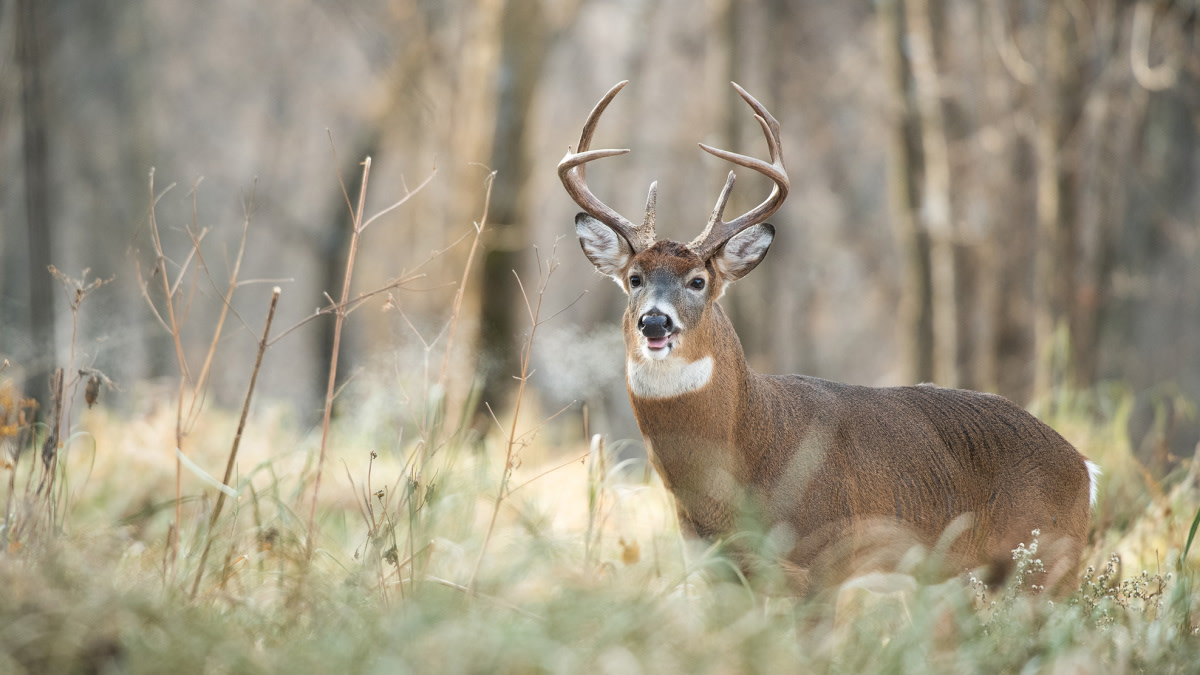
Craig and Neil Dougherty provide excerpts and insight from their newest book “Whitetails: From Ground To Gun–A Guide To Hunting and Growing Mature Whitetails.”
You can’t understand deer hunting without understanding land. Deer are inextricably linked to the land they inhabit. Land determines how a deer will spend his time, how he will stay alive, and whether or not he will realize his genetic potential. Land also determines how deer move, where they bed, and what they will eat. Connect the dots between understanding the land mature whitetails use, and the ways to hunt them and you’ve begun to realize the “Ground to Gun” philosophy.
If you think soils are important, wait until you read this next section. Without sun, nothing gets done. And the sun can have a whole lot to do with how your hunting property performs.
Sun matters when it comes to property. It determines what you will grow and when and how you will grow it. It determines how the air will move across your property and when and why it will rain and snow. It determines when antlers will get hard and when deer will reproduce. It even determines where you will sit down to eat your lunch or have a cool (or hot) drink. In short, the sun has a hand in just about everything that happens on a property.
The sun certainly determines what will grow on a property and where and when it will grow. If you understand that deer follow their stomachs then you will realize that the sun will also determine where you will find deer and how you should hunt them.
Aspect to the Sun Northern hemispheric (where we are) sun rises in the east and moves through the southern sky until it sets in the west. It is low in the sky in spring, high overhead in summer and dips low to the south once again in fall and winter. We all remember this from earth science 101.
What they forgot to teach us is how a given property (and the deer on it) interacts with the sun. All property has slope and all slope relates in some manner to the sun. Slope can be subtle and almost imperceptible as in South Florida where a 3-foot rise is referred to as a “hill,” or as dramatic as a 5000-plus-foot mountain like those found in the Adirondacks of New York or out West.
Depending on the slope and season of the year, the sun will hit a slope in either a direct fashion or much more indirectly, which resembles more of a glancing blow than a direct hit. We refer to this as the land’s aspect to the sun. Two things affect how the sun hits a given slope: 1) the time of day (sunrise vs. sunset) and 2) the time of year (winter vs. summer).
If you happened to own a piece of property that was shaped like a scoop of ice cream on top of a cone, the sun would strike the east face of the ice cream first thing in the morning. As the sun rose higher and higher in the sky, more and more of the ice cream would be in direct sun until mid-day when most of the ice cream would be in direct sunlight. As the sun moved west, less and less of the east slope of the cone would be in the sun until late afternoon when most of the east face would be in the shade. East faces warm up first and cool down early. West faces warm up as the sun moves their way but get very warm due to lots of afternoon sun and rising daytime temperatures. South to southwest exposures are hot, dry places in summer. This takes care of the sunrise to sunset part.
Seasonal Sun The other part is the winter-summer part. In the fall and winter months, the farther north you are, the lower the sun is in the sky. Hunters north of the Mason-Dixon basically are looking at a sun in the south throughout the entire hunting season. This means the south side of the ice cream cone gets the most direct rays in the fall, winter, and spring with the north getting very little at all. Ever notice how early it gets dark on the north and east side of a mountain when hunting? In winter, the sun rises in the southeast and sets in the southwest. It never gets high in the sky, always staying low in the south. This is why south facing slopes are warmest in winter. The sun hits them most directly. Northern facing slopes are cold, damp, and dark places in winter and in some locations, not a whole lot better in summer.
But lucky for us, properties typically are not shaped like scoops of ice cream. They are all bumpy and lumpy with multiple slopes leaning into the sun from all kinds of angles. The ideal property has a variety of slopes all exhibiting different aspects to the sun. This means that on a given property, you will have hot, dry sites, cool, wet ones and everything in between. This has definite implications for growing things and as we shall see later, hunting deer.
For illustrative purposes, let’s assume the entire property is planted in Ladino clover. Let’s look at 2 slopes, one facing north and one facing south. The north facing planting will be cool to cold and moist to wet depending on time of year, weather, soil, and a host of other factors. The south facing plots will be warm to hot and dry to arid depending on time of year, weather, and other conditions.
The earliest ground to green up in the spring will be the south slope as it will be free of snow and winter moisture first and as much as 10 degrees warmer than the north slope. There will be plenty of spring clover there. That’s why we always observe deer on south slopes in the early spring and late winter. South slopes are also ready to work before northern facing slopes and once planted, they provide important early spring and late fall forage.
North slopes green up and are ready to work later but they are very important sites in the summer because their cool, moist conditions will keep the clover growing happily all summer long. Hot dry conditions will shut down most clovers (including Ladino) in summer in most locations. A few forages like chicory and alfalfa do well with hot and dry, but clovers don’t do as well. Most clovers will shut down and go dormant at about 85 degrees, especially if it is dry. This is why deer often concentrate on north faces in peak summer months. On the negative side, north facing plots often shut down a full 3 weeks earlier in late fall and force deer to find food elsewhere.
Morning versus Afternoon Sun An interesting twist is southeast, and southwest facing plots. While they both lean to the south, the difference between a southeast and southwest exposure is very significant. Once again, it all has to do with the aspect to the sun. Southeast plots get direct morning sun while southwest plots get direct afternoon sun.
Morning sun is cooler and gentler than afternoon sun. Southeastern facing plots start out cool and moist in the morning and are shielded from the direct rays of the afternoon sun so they stay cooler and moister through the day. The west side of a southeast plot with reasonably high trees will be partially shaded much of the afternoon. This will allow it to retain moisture through much of the day.
Afternoon sun is hotter and stays that way on southwest facing plots all afternoon and even into the early evening. It is downright hot on a southwest plot in the afternoon and it can be very dry. Very little afternoon shade is available from trees surrounding the plot because the plot takes a direct hit from the afternoon sun.
Want the best of all worlds? Select a property having multiple slopes facing a variety of directions. This way you will have most of your bases covered when it comes to planting and growing conditions. Deer instinctively seem to figure out where the good groceries are growing and that’s where they tend to hang out.
Early green up, they are there, late fall extended growing season same thing. Northern sloping plots typically shut down shortly after the first frost and the deer leave them for greener pastures. Southern sloped plots generally keep on growing well after the first frost and this is where the deer will be found during most northern hunting seasons.
It is easy to see this pattern on food plots where deer are more predictable but not so easy to see in the woods and overgrown fields. But it does happen as deer follow their stomachs around the compass from north to west to south. Deer tend to spend most of their late fall and winter-spring time on southern exposures. These slopes are generally freer of snow and contain more growing plants. This is especially true of perennial plants that just want to add as much growth in a given year as possible. Some plants grow all winter long especially near open streams with their relatively mild 40-50 degree waters.
Figuring out how a property relates to the sun will go a long way to figuring out when and where things grow. If you figure that out and you understand that deer follow their stomachs then you will be successful in finding deer.
*Author’s Note: The elements of a property are highly interdependent and dynamic. The interaction between the soil and sun and water and air leads to the establishment of plants and animals; and dictates how they will interact with each other. These elements combined determine how deer will interact with their surroundings and understanding how whitetails will use a given property. To learn more about how these elements combine to impact deer hunting go to www.northcountrywhitetails.com or pick up a copy of our new book “Whitetails: From Ground To Gun.“
Feature image via Matt Hansen.






Conversation